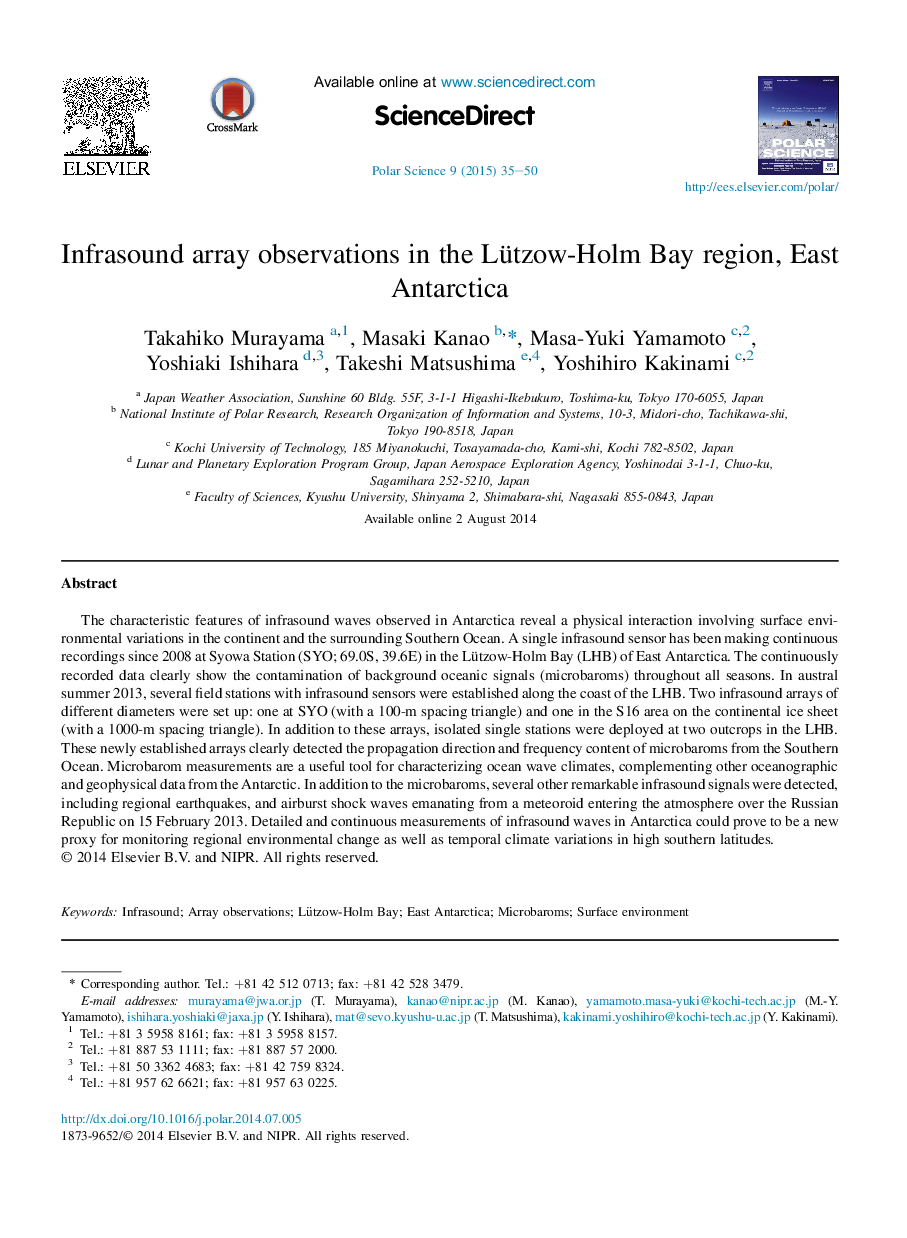| Article ID | Journal | Published Year | Pages | File Type |
|---|---|---|---|---|
| 4683278 | Polar Science | 2015 | 16 Pages |
The characteristic features of infrasound waves observed in Antarctica reveal a physical interaction involving surface environmental variations in the continent and the surrounding Southern Ocean. A single infrasound sensor has been making continuous recordings since 2008 at Syowa Station (SYO; 69.0S, 39.6E) in the Lützow-Holm Bay (LHB) of East Antarctica. The continuously recorded data clearly show the contamination of background oceanic signals (microbaroms) throughout all seasons. In austral summer 2013, several field stations with infrasound sensors were established along the coast of the LHB. Two infrasound arrays of different diameters were set up: one at SYO (with a 100-m spacing triangle) and one in the S16 area on the continental ice sheet (with a 1000-m spacing triangle). In addition to these arrays, isolated single stations were deployed at two outcrops in the LHB. These newly established arrays clearly detected the propagation direction and frequency content of microbaroms from the Southern Ocean. Microbarom measurements are a useful tool for characterizing ocean wave climates, complementing other oceanographic and geophysical data from the Antarctic. In addition to the microbaroms, several other remarkable infrasound signals were detected, including regional earthquakes, and airburst shock waves emanating from a meteoroid entering the atmosphere over the Russian Republic on 15 February 2013. Detailed and continuous measurements of infrasound waves in Antarctica could prove to be a new proxy for monitoring regional environmental change as well as temporal climate variations in high southern latitudes.
